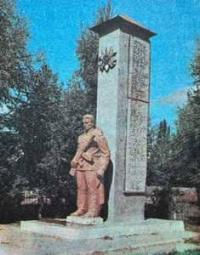You are here
Administrative-territorial division of Issyk-Kul and Naryn regions.

Settlements and cities of Issyk-Kul region.
"Khirkhyz region: to the east of it is the region of China and the sea - the Eastern Ocean, to the south of it are the borders of the Toguzguzes and partly the Khallukhs, to the west of it are the borders of the Kimaks and to the north are the uninhabited countries of the north. Their ruler is called khyrkhyz-khakan"
According to information from "Khudud-al-Alam", headquarters of khyrkhyz-khakan was in town of Kemijket, which was capital of Kyrgyz Kaganate.
Villages and cities of Naryn region.
Issyk-Kul region occupies the Central and north-eastern parts of the republic. It is located in the mountains of the Inner and Central Tien-Shan and the Issyk-Kul basin at an altitude of over 1,500 meters above sea level. It borders on the northwest and north with the districts of republican subordination, on the north and northeast with the Republic of Kazakhstan, on the east, southeast and south - with the People's Republic of China, on the southwest and west - with the Toguz-Toro and Toktogul districts of the Osh region.
The territory of the region is divided into 10 administrative districts: Aksuu, Aktala, Atbashinsky, Jety-Oguz, Dzhumgal, Issyk-Kul, Kochkor, Ton, Tyup, Tien-Shan. There are 4 cities here: Issyk-Kul - the regional center Przhevalsk, Naryn, Cholpon-Ata; 7 urban-type settlements: Kadji-Sai, Jyrgalan, Ak-Bulak, Pristan-Przhevalsk, Orto-Tokoy, Min-Kush, Dostuk; 320 rural settlements.
Population 650,200 people (1990). The area of the regions is 90,800 square kilometers. The name Issyk-Kul region was received from the high-mountain lake Issyk-Kul. The entire history of the Issyk-Kul region and the Inner (Central) Tien Shan in ancient times and the Middle Ages is inseparable from the fates of the ethno-political and state entities that changed here over the centuries.
From eastern sources it is known that at the end of the Ist centuries BC - Ist centuries AD. this region was occupied by large tribal associations (unions) of nomads: the Sakas (VIIth - IIIrd centuries BC, and then the Usuns - IVth century AD). The headquarters of the Usun ruler (gunmo) Chigu was located on the coast of Lake Issyk-Kul (its exact location has not yet been established).
From the VIth to the XIIIth centuries, the territory of the modern Issyk-Kul region (within the 1988 borders) was part of the various early feudal state formations of the Turkic nomadic tribes that replaced each other here - the kaganates. They were headed by feudal rulers - kagans (khans).
Administration in the kaganate was based on the appanage-ulus system, which was divided into smaller territorial-administrative units. After the Mongol conquest of Kazakhstan and Central Asia at the beginning of the XIIIth century, Kyrgyzstan was part of the Dzhagatai Ulus (XIIIth - Ist half of the XIVth century), subject to the all-Mongol Khan, and then - part of the Mongol state (XIVth - XVIh centuries), which occupied the territory of Semirechye, Inner Tien-Shan and Eastern Turkestan.
The rule of the rulers of the late feudal state did not lead to the formation of a stable system of governance in the territories they captured. Since the XVIth century, the predominant nationality in the Tien-Shan became the Kyrgyz. Over the next three and a half centuries, their socio-political structure and internal governance was characterized by complex tribal divisions and feudal fragmentation.
The formation of the feudal Kyrgyz people in the Tien-Shan (late XVth – early XVIth centuries) led to the creation of the Kirghiz Khanate (second half of the XVth century), which was quite extensive in territory, divided into two uluses. With the collapse of the Kirghiz Khanate, the Tien-Shan Kirghiz in the XVIIth – first half of the XVIIIth centuries waged a long and stubborn struggle for their independence against the rulers of the Dzungar Khanate in the east and, from the end of the 18th century, against the Kokand Khanate in the west.
The supreme ruler of the Dzungar Khanate (huntayji) ruled his multi-tribal population, continuing his campaigns of conquest in Semirechye and the Inner Tien-Shan. The nomadic headquarters of the ruler (urga) moved together with his numerous cavalry.
In the early XXs of the XVIIIth century, it was located in the Eastern Issyk-Kul region. The Kokand conquerors, who made military campaigns in the Inner Tien-Shan, the Chui Valley and the Issyk-Kul Basin in the first third of the XIXth century, tried to strengthen their power over the captured territory and the northern Kyrgyz tribes inhabiting it by building fortresses and fortifications with permanent garrisons and khan tax collectors (zyaketchi).
The commandants of the Kokand fortresses in the Chui and Issyk-Kul valleys were subordinate to the khan's governor of the Tashkent vilayet (region), and in the Inner Tien-Shan to the governor of the Andizhan vilayet. With the adoption of Russian citizenship (1855), the Kirghiz of the Eastern Issyk-Kul region became subordinate to the bailiff of the Senior Kazakh zhuz ("Kirghiz of the Great Horde"), and then to the head of the Alatau district (with its center in the fortification of Vernoye), subordinate to the West Siberian administration in Omsk.
With the strengthening of tsarist power in the northern part of Kirghizia, this territory was included in the Turkestan region (1865 - 1867) of the Orenburg Governorate General. y this time, Russian troops had driven the Kokand people out of Kurtka and other Kokand fortifications in the Inner Tien-Shan.
The nomadic Kirghiz there were reunited with their northern tribesmen as part of the Russian state. In 1867, the Turkestan region was abolished, and a separate Turkestan Governorate-General (with its center in Tashkent) was created from the Central Asian lands newly annexed to the Russian Empire.
It consisted of two regions - Syr Darya and Semirechensk. Among several districts into which the Semirechensk region was divided in administrative-territorial terms, there were also two Kirghiz districts - Tokmak and Issyk-Kul, later renamed Lishpek and Przhevalsk (since 1893).
The counties were divided into sections, which included both nomadic and sedentary volosts. The territory of the Issyk-Kul basin and part of the Inner Tien-Shan were included in the Przhevalsky county (now this is the territory of the Issyk-Kul region within the borders of 1988).
Thus, from the 60s of the XIXth century, an administrative-territorial division close to the general imperial and generally stable was established in all of Kyrgyzstan, as part of Turkestan. But unlike the central Russian provinces, the tsarist administrative apparatus in Turkestan was subordinate not to the Ministry of Internal Affairs of the empire, but to its Military Ministry.
This emphasized the colonial position of the region. The county chief with the district bailiffs subordinate to him concentrated in his hands, and administrative and police (and initially military) power. Personnel were appointed to the positions of district police officers and district chiefs. officers of the tsarist army, few of whom had administrative skills.
The posts of regional military governors and the Turkestan governor-general were occupied by generals. In 1882 - 1889, the Semirechensk region with Przhevalsky and its other districts was temporarily transferred from the Turkestan to the Stepnoye governor-general with its center in the city of Omsk (since 1886, both governor-generals were transformed into territories), and then returned to the jurisdiction of the Turkestan administration.
The lower administrative and managerial apparatus consisted of volost managers and ayil elders, formally elected from the Bai-Manap environment by electors (pentecostals) for 3 years on behalf of the Kyrgyz population of the volost and ayil (community).
They, like the "people's" judges-biys and arych elders, were the conductors of the tsarist colonial policy in the regions. This administrative system was called "military-people's administration". The fact that it lasted without any changes until the establishment of Soviet power in Przhevalsky Uyezd was largely determined by the close interweaving of the class interests of the tsarist colonizers and the local exploitative elite, who jointly oppressed the working masses of the Kyrgyz and resettled population.
In 1913, there were 33 volosts in Przhevalsky Uyezd. The local and regional administration considered the issue of allocating another Ketmaldinsky section in the district (1910) or forming a separate Narynsky district on the basis of the Atbashinsky section (in 1907 and especially in 1916 - 1917).
After the February Revolution, changes in the administrative and political management in the region were largely reduced to changing the signs of the old authorities or replacing the tsarist servants hated by the people with the protégés of the bourgeois Provisional Government.
After the victory of the Socialist Revolution, the Kyrgyz people for the first time in their history received the opportunity for self-determination, which confirms the emergence and development of the national statehood of the peoples of Central Asia. In 1918, the Turkestan ASSR was proclaimed - a multinational autonomous republic, part of the RSFSR, on whose territory all the Central Asian peoples lived.
The territory of the modern Issyk-Kul region was part of the Przhevalsky district of the Semirechye region, the center was the city of Przhevalsk (in 1921 - 1989 the city and, accordingly, the district were renamed Karakol). After the Civil War, in connection with the significant strengthening of Soviet power and the growth of self-awareness of the peoples of Central Asia, the question of separating the main nationalities of Turkestan into separate republics arose.
On October 14, 1924, the 2nd session of the All-Russian Central Executive Committee adopted a decision to organize the Karakirghiz Autonomous Region as part of the RSFSR. On May 25, 1925, the Karakirghiz Autonomous Region was renamed the Kirghiz Autonomous Region (KAO).
With the formation of the KAO, the territory of Kyrgyzstan was divided into 4 districts: Pishpek, Osh, Jalalabad and Karakol-Naryn. The population of the Karakol-Naryn District (center - the city of Karakol) numbered 169,000 people. In the Karakol-Naryn District, 26 volosts were formed, of which 18 were Kirghiz and 8 were mixed (volosts and village councils were distributed according to national characteristics).
This division did not quite correspond to the economic development of the districts and national characteristics, which caused the need for a new (December 1924) zoning of the KAO. The regional revolutionary committee created a regional commission for zoning, whose functions included establishing the boundaries of the region, preparing for internal administrative demarcation taking into account national, economic, geographic, historical and other characteristics.
On February 1, 1926, the Presidium of the All-Russian Central Executive Committee of the 12th convocation decided to transform the KAO in its then borders into the Kirghiz Autonomous Soviet Socialist Republic and to incorporate it into the RSFSR.
Following the regionalization carried out in December 1926, the Karakol and Naryn cantons were formed from the former Karakol-Naryn okrug. The Karakol canton (center - the city of Karakol) included 10 volosts: Kyungoy-Aksuu (center - the village of Cholpon-Ata), Tyup-Kyurmyontinskaya (the village of Kyurmyontyu), Tyurgenskaya (the village of Kerege-Tash). Jetioguz (the village of Tilekmat). Barskonskaya (village of Barskon), Tonskaya (village of Western Ton), Sazanovskaya (village of Sazanovka, now the village of Ananyevo), Priozerskaya (village of Tyup), Teploklyuchenskaya (village of Teploklyuchenka), Issykkulskaya (village of Pokrovka).
In Naryn (the center is the city of Naryn) there are 9 volosts: Dzhonarykskaya (Kochkor village), Narynskaya (Ak-Kuduk village), Onarchinskaya (Min-Bulak village). Sharkyratminskaya (Char village), Tashtobenskaya (Ak-Talaa village), Kurtka-Terekskaya (Dyurbel-Jin village, now the Baetovo village), Su-Susamyrskaya (Suusamyr village), Atbashinskaya (Koshoy-Korgon village), Kochkor-Jumgalskaya (Temir-Bulak village).
After administrative zoning in 1928, in order to involve the working population in public administration, districts were formed instead of cantons and volosts, with their direct subordination to the Central Executive Committee of the Kirghiz ASSR.
In March 1938, the republic switched to a district system. On the territory of the Karakol and Naryn cantons, the Issyk-Kul and Tien Shan districts were organized, respectively. In November 1939, the districts were transformed into regions. The formation of a regional system of government was one of the major steps in the state, economic and cultural development of Kirghizia.
The Issyk-Kul region included the city of Przhevalsk - the regional center, the urban-type settlement of Rybachye; rural districts: Balykchinsky, Jetiogyuzsky, Issyk-Kulsky, Przhevalsky, Tonsky and Tyupsky. The territory of the region was 41.9 thousand square kilometers, population 174.2 thousand people (1939 census).
The Tien-Shan region included the city of Naryn - the regional center, rural districts: Aktala, Atbashinsky, Kochkorsky, Narynsky, Dzhumgalsky, Toguz-Torosky. The territory of the region occupied an area of 56.0 thousand square kilometers, the population was 127.0 thousand people (1939 census).
During the Great Patriotic War, the district and regional administrative-territorial system of governance significantly expanded. In 1941-1945, Pokrovsky, Taldysuu and Novovoznesenovsky districts were formed from a number of districts and rural councils as part of the Issyk-Kul region. In order to improve the management of economic and cultural development and reduce administrative and management costs, the Issyk-Kul region was abolished in January 1959, and the Tien-Shan region in December 1962.
Economically weak regions were also abolished. In order to improve the administrative and territorial structure, the Issyk-Kul and Naryn regions were re-established in December 1970. The following cities were included in the Issyk-Kul region: Przhevalsk - the regional center. Rybachye, Cholpon-Ata; urban-type settlements: Ak-Bulak, Jyrgalan, Kadji-Sai, Orto-Tokoy, Pristan-Przhevalsk; rural areas: Aksuu, Jetiogyuz, Issyk-Kul, Ton, Tyup. The territory of the region was 43.1 thousand square kilometers, the population was 381.5 thousand people (1979 census).
The Naryn region included the city of Naryn - the regional center; urban-type settlements: Dostup, Min-Kush; rural areas: Ak-talinsky, Atbashinsky, Dzhumgalsky, Kochkorsky, Toguz-Torosky, Tien-Shansky. The territory of the region is 51.2 thousand square kilometers, the population is 257.1 thousand people (1979 census).
Based on the Decree of the Presidium of the Supreme Soviet of the Kirghiz SSR dated October 5, In 1988, the Issyk-Kul and Naryn regions were united into the Issyk-Kul regional region with the administrative center temporarily in the city of Przhevalsk.
The Toguz-Toro district of the Naryn region within its existing borders became part of the Osh region. In 1989, the city of Issyk-Kul (until 1989, Rybachye) became the center of the Issyk-Kul region. As of the first half of 1990, the Issyk-Kul region occupies about half of the territory of the republic - 90.8 thousand square kilometers, where 650.2 thousand people live. It includes 10 rural districts: Aksuu, Aktalinsky, Atbashinsky, Jetiogyuz, Djumgal, Issyk-Kul, Kochkor, Ton, Tyup, Tien-Shan (see the relevant articles); 4 cities of regional subordination: Issyk-Kul (regional center), Przhevalsk, Cholpon-Ata, Naryn; 7 urban-type settlements: Ak-Bulak, Jyrgalan, Dostuk, Kadji-Sai, Min-Kush, Orto-Tokoy, Pristan-Przhevalsk; 323 rural settlements comprising 99 rural Soviets.
Authority:
V. Ya. Galitsky. D. Nurmamatov. "Issyk-Kul. Naryn". Encyclopedia. Frunze, 1991. Academy of Sciences of the Kirghiz SSR. State Committee of the Kirghiz SSR.







